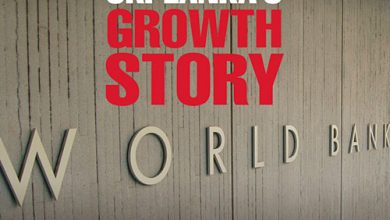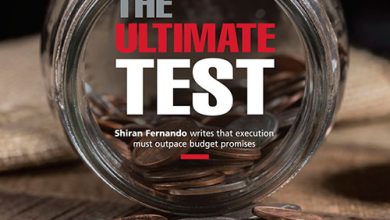ECONOMIC OUTLOOK

ECONOMIC RECOVERY IN THE BALANCE
Shiran Fernando outlines the priorities that the recently elected president will need to focus on

Following the presidential poll, the country will soon begin preparing for its next round of elections – including the general elections. Regardless of the various election cycles going forward, the focus on Sri Lanka’s economic recovery continues.
Typically, election promises made during campaigns for presidential and parliamentary elections have not helped maintain macroeconomic stability, and this has resulted in balance of payment crises from time to time.
As such, it is necessary to review the many political promises to provide relief and how they could potentially destabilise the existing macro framework.
ELECTION PLEDGES The last two election cycles in 2014/15 and 2019/20 highlighted the predicament of impractical election promises on macro stability.
In the 2014/15 cycle, the loosening of fiscal and monetary policies saw the fiscal deficit worsening from 5.5 percent of GDP in 2014 to 7.2 percent in 2015. Then in 2019/20, the deficit ballooned to 10.5 percent in 2020 compared to five percent in 2018.
The fiscal consolidation path envisaged in the 15th and 16th IMF programmes was soon reversed due to changes in the tax structure, hikes in public sector salaries and promises of other forms of relief, which were not met with revenue increases or a more austere public expenditure programme.
Moreover, the impact on the current account deficit was more visible during the 2010 election cycle due to surging imports (driven by fuel and vehicle imports) in 2010/11. It worsened to 6.8 percent in 2011 from 1.8 percent in 2010.
Vehicle imports, which were only around US$ 200 million prior to 2010, jumped to 881 million dollars by 2011. By last year, despite the ban on most vehicle imports, fuel and vehicle imports stood at 28 percent of the total import bill. In 2011 too, it was 28 percent.
We are likely to see some loosening of vehicle imports in 2025 but this will have to be implemented carefully to avoid expanding the import bill and worsening the current account deficit.
And there is likely to be further import pressure as economic activity picks up.
UNREAL PROMISES In the lead up to the recent presidential election, most candidates promised public sector salary hikes and changes to the tax structure (either through VAT exemptions and increases in the tax threshold for Pay As You Earn a.k.a. PAYE).
In August, the Expert Committee on Public Service Salary Disparities announced that the base salary of public servants will have to increase by between 24 percent and over 50 percent from January 2025. And it is likely that the newly elected president will consider a public sector pay hike in the run-up to parliamentary elections.
According to the Ministry of Finance Annual Report 2023, the public sector cadre stood at 1,353,860. Assuming a cadre of 1.3 million, a Rs. 10,000 increase in the cost of living allowance will increase expenditure by 156 billion rupees a year. The much talked about increase in PAYE tax only brought in Rs. 144 billion in 2023.
As such, financing this increase (or potential increase) next year will need to be matched by plans to raise revenue or curtail other expenditure.
Compared to the last few election cycles, this time around there’s an anchor on how loose the fiscal policy can be. Sri Lanka is still restructuring its external debt under an International Monetary Fund programme and a tight debt restructuring framework.
We have seen in the past that reversal of the fiscal programme has seen the suspension of the IMF facility. This time around, the programme will need to continue for the restructuring process to be a success. While there are likely to be tweaks to the International Monetary Fund programme, it is unlikely that any major changes can be made.
In its Article IV report and second disbursement review, the IMF highlighted its concern on the appetite for reform reducing with elections, particularly in terms of improving tax revenue.
The challenge remains to generate sufficient revenue to achieve the primary surplus of 2.3 percent of GDP by 2025 and maintain it thereafter. Sri Lanka’s fiscal path is crucial to reducing its public debt from 126 percent of GDP in 2022 to under 100 percent by 2030.
GROWTH POLICIES Beyond populist policies, the president and his government will have to focus on pro-growth policies. The fiscal path will need to be supported by policies that enable the private sector to be the engine of growth, and promote a new set of entrepreneurs to emerge and thrive.
Can a future government deliver on implementing a national single window – and can a digital ID that connects key government agencies be implemented to deliver better services for the public?
And can the tariff structure be more export friendly?
These are some of the crucial questions that need to be addressed over the next few years.






